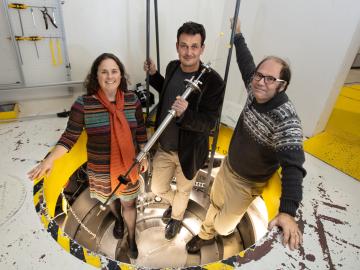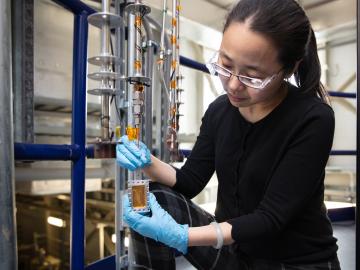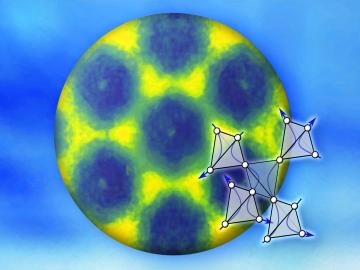
Filter News
Area of Research
- (-) Neutron Science (55)
- (-) Sensors and Controls (2)
- Advanced Manufacturing (22)
- Biological Systems (1)
- Biology and Environment (54)
- Building Technologies (1)
- Computational Biology (2)
- Computational Engineering (3)
- Computer Science (13)
- Electricity and Smart Grid (3)
- Energy Science (201)
- Functional Materials for Energy (1)
- Fusion and Fission (15)
- Fusion Energy (8)
- Isotope Development and Production (1)
- Isotopes (8)
- Materials (119)
- Materials Characterization (1)
- Materials for Computing (19)
- Materials Under Extremes (1)
- Mathematics (1)
- National Security (34)
- Nuclear Science and Technology (17)
- Nuclear Systems Modeling, Simulation and Validation (1)
- Quantum information Science (9)
- Supercomputing (93)
- Transportation Systems (2)
News Topics
- (-) 3-D Printing/Advanced Manufacturing (6)
- (-) Advanced Reactors (1)
- (-) Artificial Intelligence (6)
- (-) Biomedical (14)
- (-) Clean Water (2)
- (-) Composites (1)
- (-) Grid (1)
- (-) Machine Learning (3)
- (-) Materials Science (23)
- (-) Quantum Science (7)
- (-) Security (3)
- (-) Transportation (5)
- Big Data (2)
- Bioenergy (7)
- Biology (7)
- Biotechnology (1)
- Chemical Sciences (3)
- Computer Science (13)
- Coronavirus (10)
- Cybersecurity (1)
- Energy Storage (6)
- Environment (8)
- Fossil Energy (1)
- Frontier (1)
- Fusion (1)
- High-Performance Computing (2)
- Hydropower (1)
- Materials (14)
- Mathematics (1)
- Microscopy (3)
- Nanotechnology (10)
- National Security (2)
- Neutron Science (120)
- Nuclear Energy (3)
- Physics (9)
- Polymers (1)
- Quantum Computing (1)
- Space Exploration (3)
- Summit (6)
Media Contacts

A versatile class of flexible, protein-like polymers could significantly advance future drug delivery methods. But first, scientists have to develop a reliable process for tailoring these polymers into shapes that can effectively transport medicines throughout the human body.

Biological membranes, such as the “walls” of most types of living cells, primarily consist of a double layer of lipids, or “lipid bilayer,” that forms the structure, and a variety of embedded and attached proteins with highly specialized functions, including proteins that rapidly and selectively transport ions and molecules in and out of the cell.

An international team of researchers has discovered the hydrogen atoms in a metal hydride material are much more tightly spaced than had been predicted for decades — a feature that could possibly facilitate superconductivity at or near room temperature and pressure.

ORNL computer scientist Catherine Schuman returned to her alma mater, Harriman High School, to lead Hour of Code activities and talk to students about her job as a researcher.

Scientists at the U.S. Department of Energy’s Brookhaven National Laboratory have new experimental evidence and a predictive theory that solves a long-standing materials science mystery: why certain crystalline materials shrink when heated.

Scientists have discovered a way to alter heat transport in thermoelectric materials, a finding that may ultimately improve energy efficiency as the materials

Researchers at the Department of Energy’s Oak Ridge National Laboratory, Pacific Northwest National Laboratory and Washington State University teamed up to investigate the complex dynamics of low-water liquids that challenge nuclear waste processing at federal cleanup sites.

OAK RIDGE, Tenn., March 20, 2019—Direct observations of the structure and catalytic mechanism of a prototypical kinase enzyme—protein kinase A or PKA—will provide researchers and drug developers with significantly enhanced abilities to understand and treat fatal diseases and neurological disorders such as cancer, diabetes, and cystic fibrosis.


Researchers used neutron scattering at Oak Ridge National Laboratory’s Spallation Neutron Source to investigate bizarre magnetic behavior, believed to be a possible quantum spin liquid rarely found in a three-dimensional material. QSLs are exotic states of matter where magnetism continues to fluctuate at low temperatures instead of “freezing” into aligned north and south poles as with traditional magnets.


